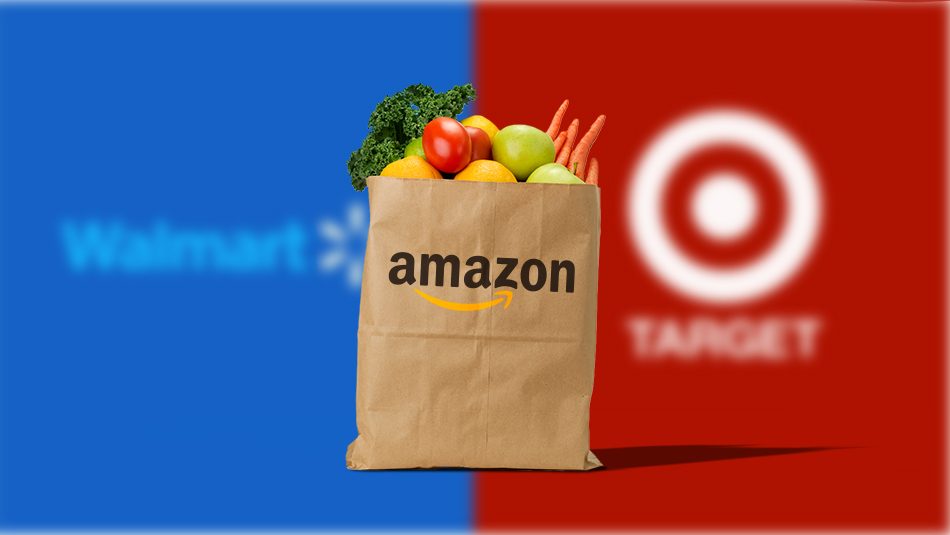
The Food Industry and Amazon: Who’s Fighting Back…and Winning
There was nothing short of an avalanche of press surrounding Amazon’s purchase of Whole Foods. The conclusion of virtually every article and report was that Amazon will disrupt the supermarket category and take it over the way they have so many other segments. And, although Amazon claims 18% of all online grocery sales, the vast majority of food and beverage sales are still offline, leaving plenty of room for growth…for everybody.
In fact, a good case can be made that their purchase of Whole Foods was more defensive than aggressive. Their subsequent announcement that Amazon Fresh is exiting all but a few markets is an indicator of what they are up to.
Here’s the thing. The supermarket industry has had decades of experience figuring out how to provide consumers with fresh foods efficiently and, for the most part, profitably. It’s not an easy thing to do. The competition in the grocery business has always been fierce, and these wars have left the current players battle-hardened and sharp. They are not going to roll over and play dead for an upstart like Amazon. They are working on myriad combinations of e-commerce, delivery, order online and pick-up, meals in a box and any number of other ways to get fresh food to consumers beyond the traditional visit to the grocery store.
It is going to be easier for major supermarket players to come up with online grocery ordering and delivery systems than it will be for Amazon to learn how to manage the fresh food “procurement to delivery” chain. That is why they bought Whole Foods.
In fact, most major grocery chains have been offering some form of home delivery or other for years. On the other hand, Amazon Fresh took years to expand beyond core markets like Seattle, Los Angeles and San Francisco, and now they’re pulling back from many of those expansion markets.
Meanwhile, supermarket chains have a blizzard of food marketing activity underway to help fend off the Amazon challenge.
Walmart is testing ‘direct-to-fridge’ delivery of groceries in Silicon Valley, in partnership with smart-lock company August. The delivery company will place groceries that need refrigeration in the customer’s refrigerator if they’re not home. Nationally, they are tripling the number of items available online this holiday, and lowering prices (although some reports note that some of their online prices are higher than their in-store prices). Meanwhile, they will throw 20,000 holiday parties and 165,000 product demos this quarter in their stores to convince customers that brick-and-mortar shopping has some advantages e-commerce can’t deliver.
Target Restock is expanding its next day delivery service for online orders to reach more than 20% of the U.S. population, competing with Amazon’s Pantry service. Customers can choose from over 15,000 items. Among the most popular are snacks, beverages, cereal and mac & cheese.
In Florida, Publix, which pioneered curbside pick-up in the ‘90’s, is once again testing the option, along with home delivery via Instacart, following the success of Kroger and Walmart in this area.
Aldi and Lidl, interlopers from Germany, approach easy shopping in a whole different way. They offer extremely low prices and small stores with limited offerings. Their typical stores average only 12,000 sq. feet. Their customers like both the low prices and the ease of shopping. Lidl has plans to expand from its current 1,700 stores to 2,500 locations in the next five years, and newcomer Lidl will have 100 stores by next summer. Lidl spokesman Will Harwood, quoted by Alina Selyukh in a report for NPR, states that “…by the time a customer reaches the end of the first aisle, they’re going to typically be able to do about 80 percent of their shop”. For some consumers, that may be easier than ordering online and awaiting a delivery.
You’d expect millennials, more than any other demographic, to favor Amazon. But Progressive Grocer reports that BrandIndex’s list of “Best Perceived Brands by Millennials” places Walmart and regional grocer HEB above Amazon. While HEB offers curbside pickup at some locations, and low prices are part of the appeal, their philanthropy and support of local communities also factor into millennials favoring the Texas-based grocer. Still run by the Butt family, the grocer has donated hundreds of millions of dollars supporting local education and activity groups. Their response to Hurricane Harvey also appealed to millennials. They overstocked their stores as the hurricane approached to prevent out-of-stocks, deployed their Mobile Kitchen to serve meals to devastated Victoria, Texas, and shipped truckloads of ice and water to affected areas.
If you think Amazon’s foray into the grocery business is revolutionary, wait till you hear what Bay Area company Farmstead is up to. Their goal is to replace the supermarket altogether and to dramatically reduce food waste. Customers select items from locally sourced farm produce and grocery products. Computer modeling and algorithms allow Farmstead to stock micro warehouses with just the right amount of product to reduce food waste, and to organize delivery routes to be efficient and eco-friendly. Delivery is free for customers who join a weekly optimized route. Packaging is minimal, and ice packs, bags and milk bottles are reusable.
Not to be left out of the game, Costco announced in October the launch of their online shopping service, CostcoGrocery.The service offers 500 grocery items delivered free with baskets of $75 or more. They also announced expansion of their relationship with Instacart.
Supermarket News reported last month that Kroger is expanding its Prep + Pared meal kit service from its current three markets to eight. Their ‘Scan, Bag, Go” mobile app driven self-checkout service is expanding from a 20 store test to 400 stores.
Albertsons has made paying for groceries easier by rolling out Apple Pay at all their stores, including their Safeway, Vons, Jewel-Osco, Shaw’s, Acme, Randalls, Tom Thumb and Haggen banners.
Meijer reported in an October issue of Produce News that it was on track to make over one million ‘store-to-door’ deliveries this year, after introducing the service only last September. They have taken advantage of their supercenter assortment to add many new categories to their home delivery capabilities this Holiday season.
Fighting back in a whole different way, several retailers are said to be invoking clauses in lease agreements to block Amazon lockers and delivery operations at Whole Foods stores. Lidl reportedly included a clause prohibiting operation of pickup facilities at a proposed Long Island, NY site.
Meanwhile, in another sign that Amazon is still having trouble finding its way in the grocery business, they have reportedly offered a one year promotion to sellers of non-perishable grocery items priced under $15, lowering their referral fee from 15% to 8%.
On the plus side, Amazon confirmed reports that they are working on new grocery store formats. In a sign that they are looking to further integrate all their channel offerings, they announced that Steve Kessel, an Amazon veteran, would take over responsibilities for its physical retail outlets, including Whole Foods, as well as its fast-delivery operations. And they announced another round of price cuts at Whole Foods right before Thanksgiving, plus a tie-in with Allrecipes.com to deliver all the items in a given recipe the same day via Amazon Fresh.
So, what does this mean for food marketers, food commodity boards and package food manufacturers? The only thing we can be sure of is that the retail food business is changing faster than ever before, and that while it may end up being simpler for the consumer, it will be a lot more complicated for those in the value chain dedicated to getting grocery products into their hands. In another sign that Omni-Channel marketing is the new norm, both Ahold and Dollar General recently announced the hiring of a Chief Digital Officer, a new position at both companies. Food companies of all stripes must be ready to deliver their products to consumers in multiple ways, with the traditional supermarket visit by the consumer slowly being replaced by multiple other options.







